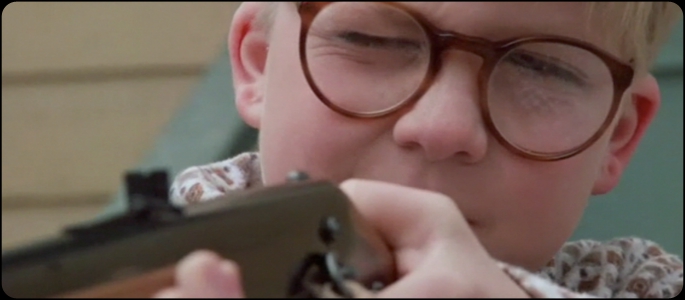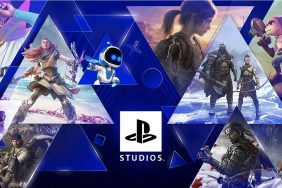The Tokyo Game Show was Sony’s to dominate, and dominate it did, basically grabbing everyone by the face and making it obvious that the Vita is a force to be reckoned with. Here, I give Sony its official TGS Report Card.
Science
A
The Vita is an amazing machine and Sony did a fine job proving it. Shuhei Yoshida got on stage and was like, “Oh hey by the way check out Resistance: Burning Skies cause I’m gonna play it, all the while showing you the social interaction features that Trophy whores around the world are gonna go gaga over.” As if he couldn’t put enough saliva on the show floor, he continued, “So, you biznatches wanna see me play Killzone 3 on this bad boy?” and went on to do so. The Augmented Reality (AR) demonstration was insane; I’d heard of the concept but hadn’t yet seen it in action. During the demonstration and the Sony Keynote, I thought homeboy was gonna kick a field goal right from the stage and then say “Yeah I just did that because like, I can.” Bravo.
Math
F
What was Sony’s most important point to make at the show? That the Vita is something worth buying — that it’s the handheld gaming device to own. What’s the best way to prove that? Well, stage presentations are good, but what you really wanna do is create a batch of loyal believers; it’s the same as starting a new religion, really (with which I may or may not have experience >_>). When someone has a positive personal experience with a product (or deity), they’re gonna try to rally others to it, they’re going to defend it when necessary, and they’re probably going to support it with their time and money. It’s a no brainer that three short months before release, Sony would want to use Japan’s biggest game show as a golden opportunity to get that bugger into as many hands as possible. With Microsoft’s small presence in Japan’s gaming world shrinking even smaller and Nintendo skipping the show, Sony had the chance to make Vita the only game in town…but it dropped the ball.
Lines to play any Vita game were going to take you an hour to get through, whether you were the one and only person wanting to play that game or one of the 500 waiting to play Uncharted: Golden Abyss. Having some long lines is understandable, but making your short lines into long lines felt like a dick move. The way Sony was running its Vita demos was putting everyone through a retard test first, making sure they knew how to handle the new device. People were plucked from the various lines 10 at a time to compete in some touchscreen games, two people for each Vita unit. After that, they were passed along to the real lines for their games of choice. While this was necessary once, maybe even twice, the process could have really been sped up if there was some kind of stamp or card you could get that said “Hey, I’ve been through this, can I just cut to the actual line?”
After that, hey, how about adding some more Vitas? Looking at the show floor, the low amount of Vita units present was really disappointing. You gotta get more people playing more games, and having a good time doing so; that’s just basic marketing. The press-only days were strenuous for anyone that wanted to play more than one Vita game. On the first press day of the show, I played Uncharted and Disgaea 3 on Vita and then I was basically done. I did have time to squeeze in another more Vita games, but the lines were killing me. In talking with other people in those lines, I was far from alone. One told me, “My boss isn’t gonna like it but I only really have time to play two Vita games.” It’s an important system and certainly Sony’s hottest thang right now, but the company can’t expect everyone at the show to wholly ignore everything else; heck, even if the attendees did ignore everything else, there wouldn’t be nearly enough Vitas to placate them. The Vita supply represents a missed opportunity.
Does not play well with others
Driver’s Ed
F
In order to slightly quell the math problem above, journalists from top print and online publications all over the world were invited on a special boat ride, which promised a little bit of talkin’ with Sony and some hands-on time with the Vita. They were herded onto a bus that was to take them to the dream boat. Problem was, the bus was late to depart, then got horribly lost, causing a lot of problems. So you had all these writers stranded, sitting on a bus when they could be writing about TGS. When they got to the boat, things didn’t get any better. For all that hoo-ha, Sony only brought one Vita per every 10 attendees to play (60 people, six Vitas to be exact). I wasn’t on the “lose cruise” myself, but in talking with three people that went and asking about their experiences with the Vita, their answers were:
“I didn’t get to play anything,” “I enjoyed Sound Shapes, but only got to play for four minutes,” and, “By the time it was my turn I didn’t care anymore.” Yes, these kinds of quotes are what I fill my little notebook with.
Physical Education
C
Those Vita lines should have had some sort of management going around and giving shoulder rubs to those of us who had to carry backpacks around. Speaking of getting physical, where the heck was Move? The hyped up debut of a product one year only to see it fade far, far into the background the next is not a way to build confidence among your user base.
Art
A
Some of the most artistic games of the whole damn show were PS3 exclusives. The ICO & Shadow of the Colossus HD Collection is now on shelves, a remastered version of two classics, among very few examples of “games as art.” Are games art? If so, these are two prime examples, and you could read the joy on the faces of those that played ICO and SotC. Fun story, my wife’s pretty darn good at SotC in particular and got farther in the timed demo than anyone else who’d played the game at the show; the booth attendants were educated on how to find and defeat the first colossi and that was it, so when she started fighting the second one, her chaperone’s awe was visible.
The other area where Sony gets good marks in Art class is having a PS3 exclusive that paints a pretty picture: Ni no Kuni. Talk about a great-looking game, this is atmospherically one of the most impressive RPGs of the generation. Cumulatively over two shows, I’ve spent 40 minutes with it, but in that time it’s shown me everything: an overworld that’s genuinely fun to explore, towns full of wonder, likeable characters, entertaining battles, and of course, top-notch visuals courtesy of Studio Ghibli. Tales of Xillia, with its special system bundle, helped shift over 60,000 PS3s in its first week of Japanese shelf time, so props to Sony for allowing a similar opportunity to Level-5 with its own Ni no Kuni bundle, hitting Japan in November.
History
B
With all the flash of the Vita, I forgot all about that network down…um, the credit…ah…credit score? Credit report? Network security…br…something about the beach? Beach? I can’t even remember anymore because Resistance: Burning Skies and handheld Killzone acted like the flashy thing from Men in Black, wiping the memories of everyone at the show and convincing us instead to focus on things like the Vita, its 26 launch games, its Augmented Reality, and boatload of social abilities. The strong presence of PS3 games everywhere in both shared and exclusive form, the continued flow of strong PSP software, practically rewrote history.
Final Grade: C+
Sony did a lot of things right with its stage presentation, its show of great third-party support for PS3 and Vita, and its demonstration of what the next Sony handheld can really do. There were some definite flubs, however, as not nearly enough gamers were able to get their hands on a Vita, and those who did could only sample a very limited number of its highly touted games. This wasn’t just a popularity problem, it was largely a supply problem. You gotta bring all your guns to the big show like that. Lack of competition helped Sony come away the clear star of the show, so in the end, a little luck went a long way for PlayStation.








